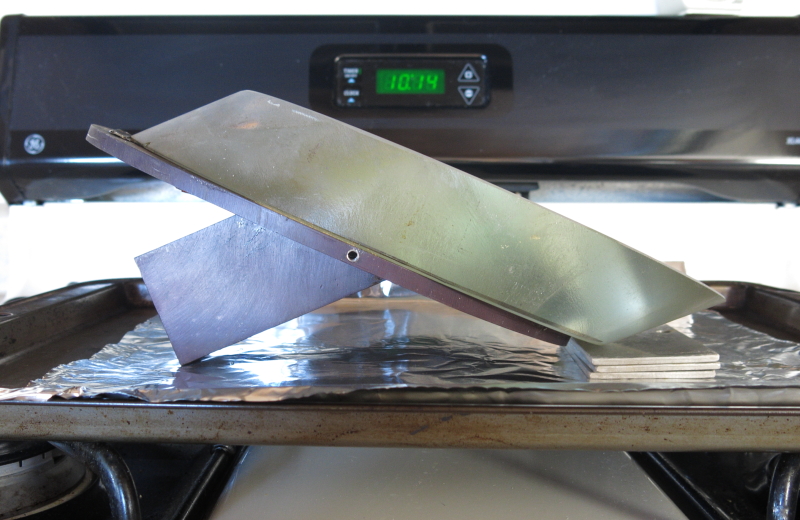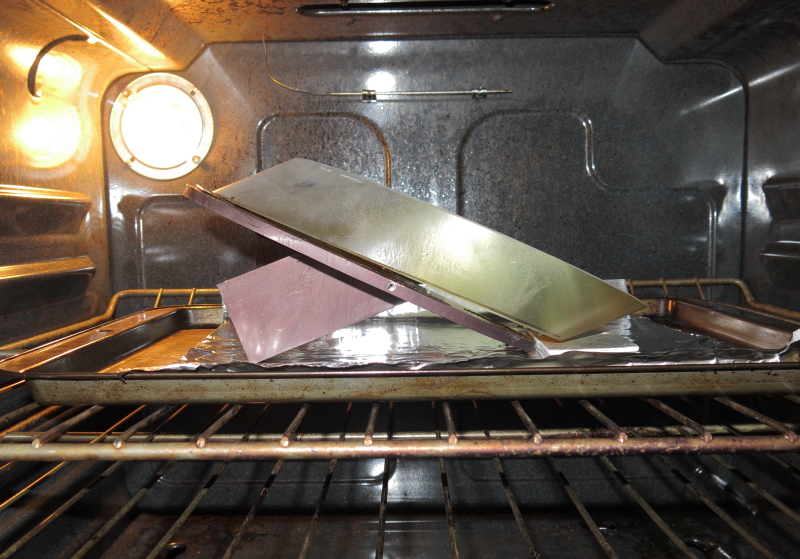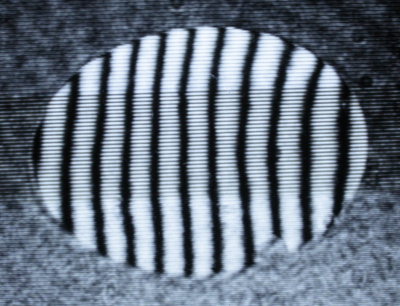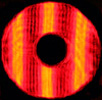December 18,
2013: A
half-baked secondary mirror
All text and images Copyright Michael E. Lockwood, all rights
reserved.
I picked up some optics on the way home from a trip - a 32" mirror for
testing, and the 6.25" m.a. Pyrex flat that goes with it. The
flat was
glued to a piece of aluminum.
First, let me say this - unless you know EXACTLY what you are doing, I
never recommend gluing a high-quality telescope mirror to anything.
Smaller secondary mirrors are the only exception, say under
3"
m.a., but there is still a chance of astigmatism as the glass and
whatever it is glued to cool and change dimension at different rates.
Note: The best thing to glue a piece of glass to is another
piece
of glass. That piece can then be bolted carefully to
something
else. The second piece of glass will expand underneath the
bolts,
allowing the change of dimension, and preventing the mirror from being
significantly distorted.
Normally freeing the mirror from glue is no big deal - you simply slide
a
piece of wire, a razor blade, or a putty knife under the
mirror,
cutting the adhesive. However - this assumes there is space
between the mirror and what it is glued to.
In this case, there was no space! Clearly the genius that did
this did not anticipate ever having to remove the mirror. So
what
to do?
After some consultation, it appeared that most adhesives would lose
their strengths above ~400 degrees F. So, into the oven the
Pyrex flat
went, slowly ramped up to 425 degrees F. I left it there for
a
few hours, and found that at some point the flat had slid down its
holder by ~1/2", as can be seen in the image below. I figured
the
glue was done for, and cooled it off slowly.
(Disclaimer - I take no responsibility if you try this and something
goes wrong. You certainly don't want to do it with a mirror
that
is made from something other than Pyrex or another lower expansion
substrate like quartz, etc. Anything you try is done at your
own
risk.)

However,
upon
removal of the cooled-off items, attempts to separate the mirror from
the metal were
unsuccessful. The glue was still holding, and there was still
no
gap between glass and metal. So, at this point the flat was
literally only half-baked!

After another thermal cycle the next day and some gentle persuasion
with a putty knife, the mirror finally separated from the metal and it
fell away, as can be seen above. A razor blade is just
visible
wedged between glass and metal at left.
After cooling, I set the flat up for interferometric testing in my 24"
collimated beam. The results below show a flat that is
decent, but it
can likely benefit from some tweaking and can be improved further.
It
certainly merits some more testing after the coating is removed.


Please check back for future installments of "In
the Shop".
Mike
Lockwood
Lockwood Custom Optics







